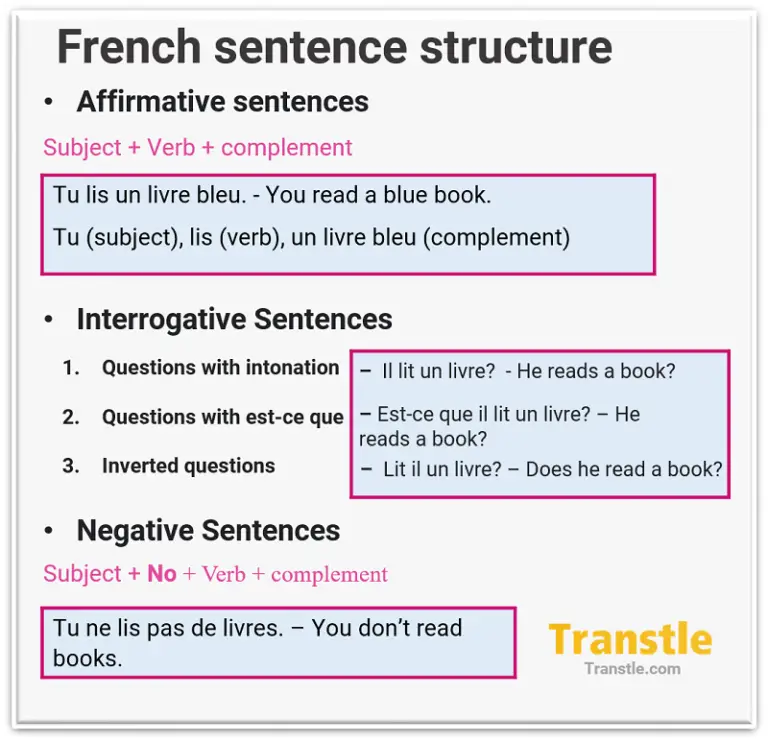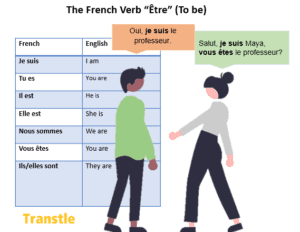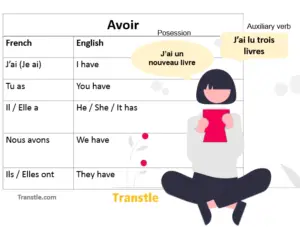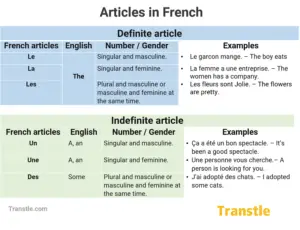French Sentence Structure: How to write sentences in French with Examples
French Sentences
A sentence is a fundamental unit of communication that conveys a message, and its structure refers to the order of the words. In French, sentences can be affirmative, negative, or interrogative, and the most basic structure is the affirmative form consisting of a subject + verb + complement.
For example, the sentence “You like food” can be translated to French as “Tu aimes le repas”, where “tu” is the subject, “aimes” is the verb, and “le repas” is the complement.
This basic structure serves as the foundation for creating more complex sentences by adding modifiers, adjectives, adverbs, and other grammatical elements to convey more precise meanings and nuances.
Contents
Elements of the sentence
- Subject. It’s the person, animal or object that executes or experiences the action.
- Verb. It’s action or state of being. For example, “to live,” “to walk,” “to feel,” etc.
- The complement. It provides additional information to the verb, such as qualities or specifications. For instance, in the sentence “I put the book in my bag,” the complement is “in my bag,” which specifies where the action of putting the book occurred.
How to form sentences in French

Affirmative sentences
In French, affirmative sentences follow a specific structure: subject + verb + complement. This means that the sentence starts with the subject, followed by the verb, and ends with the complement that describes the action or provides additional information
Examples
|
Beginners are recommended to focus on learning affirmative sentences first. The other types of sentences correspond to more advanced lessons. Take a look at the rest and proceed with the next lesson, “Articles in French.”
Interrogative sentences
Interrogative sentences are used to ask questions, and there are various ways to structure them.
a. Question with intonation
They follow the same basic structure as an affirmative sentence (subject + verb + complement), but with the addition of a question mark the end of the sentence and speaking with a question tone.
|
b. Questions with est-ce que
It follows the same basic pattern as an affirmative sentence: subject + verb + complement, but with the addition of “est-ce que” at the beginning.
|
c. Inverting the subject and the verb
Another way to form questions in French is by inverting the subject and the verb. This means that instead of starting with the subject, the sentence begins with the verb, followed by the subject, and then the complement. This structure is commonly used in formal writing and speech.
Viens tu demain à Paris? – Are you coming to Paris tomorrow? Pedro et Julia, visitent ils la ville cette semaine? – Will Pedro and Julia visit the city this week? Est-il ici? -Is he here? |
See also: Interrogative sentences in French
Negative sentences
Negative sentences are used to deny. The basic structure of a negative sentence in French is as follows: subject + ne + verb + pas + complement. The word “ne” is placed before the verb, and “pas” is placed after the verb to indicate negation
Subject + Ne + Verb + Pas + Complement
|
Omitting the “ne”
In spoken French, it is common to omit the “ne” in negative sentences, especially in informal settings. This is known as “ne explétif” or “ne facultatif”. However, in formal writing and speech, it is still necessary to include the “ne” in negative sentences for correct grammar.
For example, “Je ne comprends pas” (I don’t understand) can be shortened to “Je comprends pas” in informal spoken French.
See also: Negative Sentences in French
Agreement in gender and number
If the noun is accompanied by an article (la, le, les, un, une, etc.) and/or an adjective, they must agree on gender and number.
La fille dort. – The girl sleeps. Les filles dorments. -Th egirls sleep. Le fil lit. – The boy reads. Les fils lisent. -The boys read. |
Quiz and exercises
Part 1.
- What is the basic structure of an affirmative sentence in French?
- How do you form a question in French using “est-ce que”?
- What is the structure of a negative sentence in French?
- Inverting the subject and verb is another way to form questions in French. True or False?
- What is the purpose of the word “ne” in a negative sentence in French?
Part 2.
- Transform the following sentence into a question using “est-ce que”: “Tu parles français.”
- Turn the following sentence into a negative sentence: “Je suis heureux.”
- Invert the subject and verb to form a question: “Tu aimes les croissants.”
- Write an affirmative sentence using the following subject, verb, and complement: “Elle / écouter / de la musique.”
- Turn the following sentence into a negative sentence: “Nous allons au parc.”
- Form a question using the following subject, verb, and complement: “Vous / aimer / le chocolat.”
Read next



